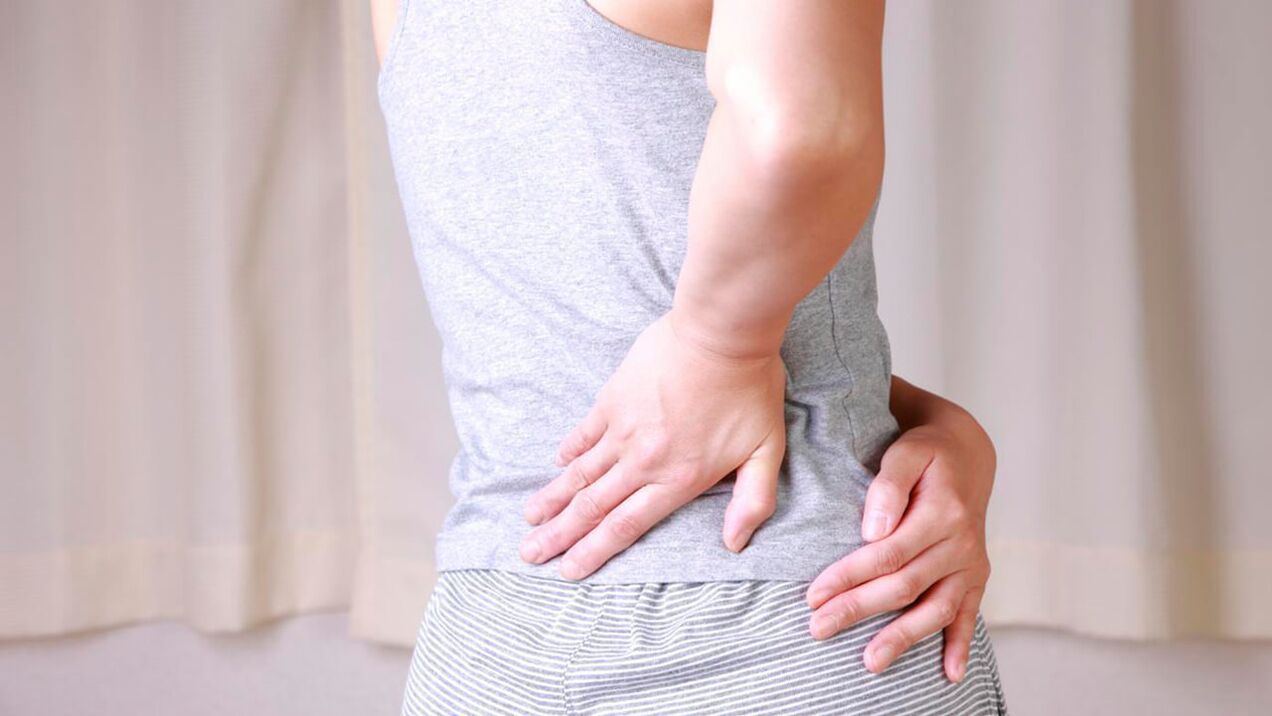
One of the common symptoms with which patients go to the medical facility is pain in the hip joint. The causes, treatment and possible diseases that cause such a manifestation are impossible without qualified medical help. Discomfort in any part of the musculoskeletal system can indicate the development of serious pathologies, so hip joint dysfunction should not be ignored.
Anatomy of the hip joint area
The hip joint plays an important role in motor activity. It is one of the largest human joints that can withstand heavy loads both while standing and walking upright.
bones that make up a joint
The hip joint is formed by the femoral head and the acetabulum of the innominate bone of the pelvis - the strongest and largest parts of the human skeleton. The minimum number of anatomical elements of the joint ensures its strength and reliability, the ability to withstand body weight during movement. Most pathologies of the hip joint begin with damage to the acetabulum, the immovable part of the joint. It has the shape of a bowl, the center of which is slightly angled upwards, which ensures an even distribution of the load between the pelvic bones.
The glenoid cavity is a strong and solid formation consisting of 3 types of pelvic bones:
- ileal
- ischial
- public
The joint cavity is the most vulnerable place in children, whose bone tissue is not strong enough. Due to the presence of a small bony ridge at the edge of the socket, the head of the femur is completely immersed in the "bowl", which provides a strong support for the limb. The moving part of the joint is the femur (head, neck, greater and lesser trochanters). The shape of the head corresponds to the cavity of the joint cavity. It is covered with cartilage tissue, which ensures perfect alignment of the joint elements and their smooth sliding. At the center of the head is a strong ligament that connects the bone to the acetabulum, which provides additional grip and support.
The neck protrudes from the head of the femur at an obtuse angle, which ensures the mobility of the joint and uniform distribution of the load between the limbs. Trochanters are bony projections to which muscle tendons attach.
tissues and structures
The normal functioning of the joint is ensured by various structures, each of which performs the respective functions.
Blood supply, functioning and decreased joint sensitivity are ensured:
- Ligaments and tendons surround the joint on all sides, covering and protecting the femur and its neck, as well as the socket itself.
- Cartilage covers the femoral head and part of the acetabulum.
- Subcartilaginous areas are bony tissue composed of cells and connective extracellular matter.
- Joint membrane or capsule is a source of special secretion - synovial fluid for lubrication of joint parts.
- The acetabular labrum connects the edge of the acetabulum and the transverse ligament.
The hip joint is supplied with nutrients by a fairly isolated network of vessels and arteries. The blood supply to the internal parts of the joint is provided by the acetabular branch of the obturator artery, and the capsules, ligaments and surrounding muscles are supplied by the deep arteries of the thigh and buttocks.
Anatomical formations located next to the hip joint
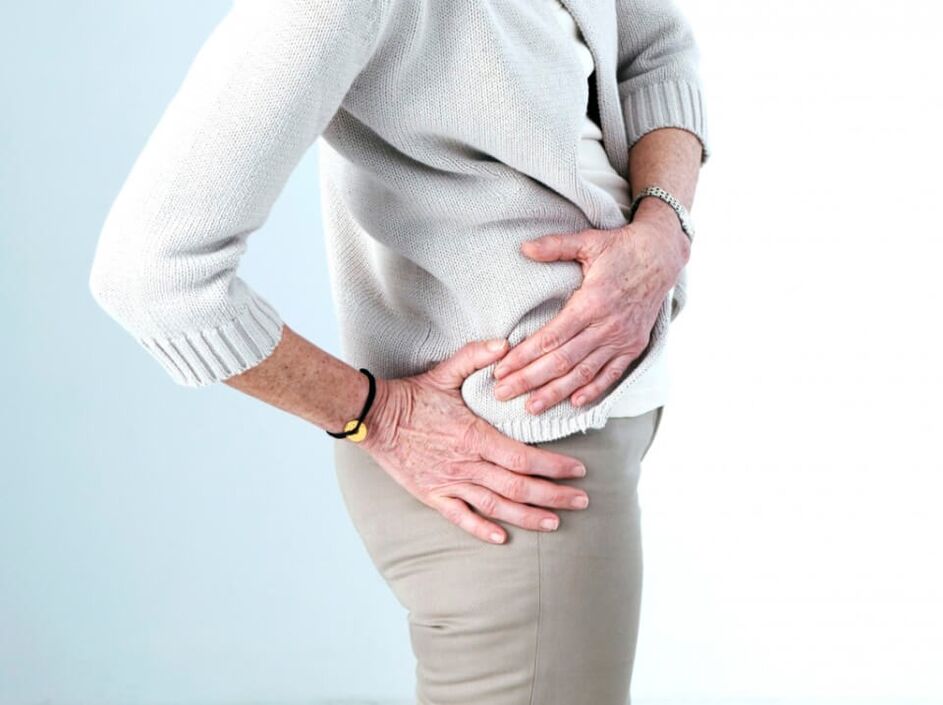
Often the cause of pain in the hip joint is damage to the anatomical structures next to it. These elements include:
- Skin and subcutaneous tissue - the outer covering of the body
- The muscles of the thigh, pelvis, back and buttocks provide joint mobility and additionally strengthen it from the outside
- Articular ligaments - perform a strengthening function, are located around the joint capsule
- A periarticular bursa is a bundle of connective tissue that prevents friction between soft and hard tissues.
Risk factors
Inflammatory processes in the pelvic area occur due to mechanical damage or damage caused by certain types of bacteria. In this case, both the joint elements and the anatomical formations surrounding them may be subject to pathological effects.
As a rule, one or more structures become inflamed:
- leather
- muscles
- Ligaments (joint, femoral heads)
- Periarticular bursae
- TBS capsule
- Cartilage
- acetabular labrum
- subcartilaginous areas
Pain in the hip joint is often caused by harmful microorganisms that provoke the development of infectious arthritis. Other causes are also common:
- Immune system disorders
- Joint injuries due to excessive physical activity
- old age
- Metabolic disorders
- other diseases
Peculiarities of pain
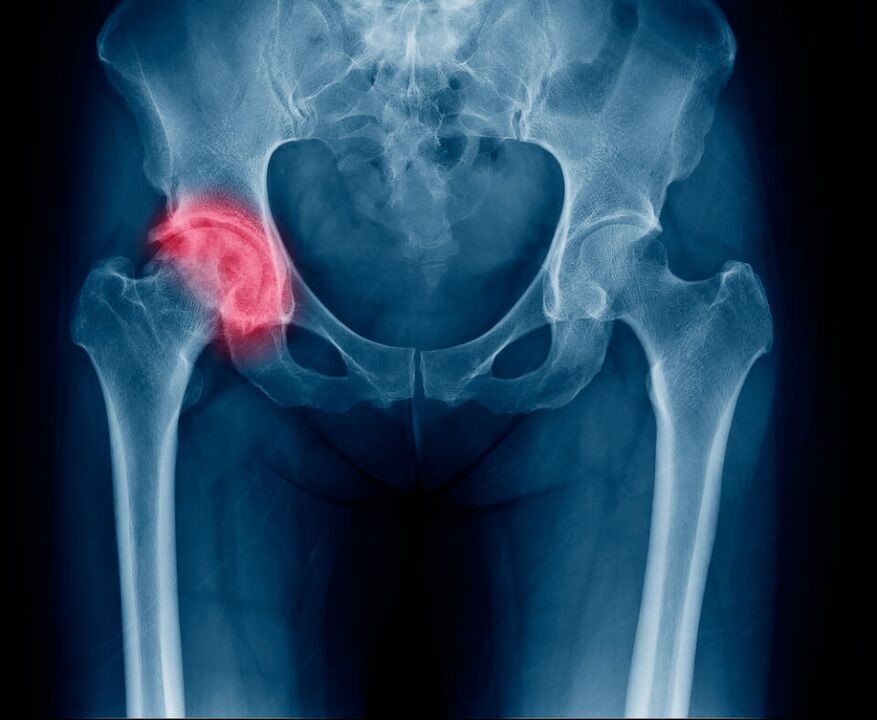
Additional symptoms play an important role in the diagnosis of hip pain, which may indicate the root cause of the problem.
Pain in the hip joint and radiates down the leg
If painful joint pain radiates to the groin, knees, or buttocks, then the problem is most likely caused by damage to the innervating nerve in the leg area due to one of the following reasons:
- Joint tumor
- Infectious arthritis - occurs due to damage by a pathogen
- Femur fracture (head or neck)
- Legg-Calvé-Perthes pathology - necrosis of cartilage tissue of the femoral head
- Juvenile epiphysiolysis - violation of the structure of the joint head and its inflammation
Pain in the hip joint that radiates to the leg may indicate pathologies of the cartilage tissue and periarticular structures, lack of joint lubrication, and damage to the synovial membrane. Painful symptoms may appear suddenly or increase gradually.
Pain when walking
Pain in the hip joint can occur when walking if the acetabulum comes into contact with the cartilage tissue of the femoral head, causing an inflammatory process. The cause of this phenomenon can be mechanical damage, inflammation of anatomical formations located next to the joint.
Depending on the intensity of the pain in the hip joint while walking, you can determine the main cause of the problem:
- Discomfort that appears at the beginning of walking gradually decreases - a sign of inflammation of the periarticular bursa
- Discomfort that gradually increases from the moment of starting to walk - inflammation of the articular surfaces of the hip joint
- Continuous pain of high intensity, accompanied by a decrease in joint function - occurs with dislocations and fractures.
- Pain appears closer to the night - the result of deformation of the femoral head and (or) acetabulum cartilage, which rub against each other and become inflamed.
- Pain of moderate intensity is a sign of minor injuries and bruises
Pain when abducting the leg
Pain in leg abduction is caused by inflammation of tissues and structures that provide movement: muscles, periarticular bursae, tendons. Similar symptoms are often caused by myositis (inflammation of muscle tissue), bursitis (inflammation of the periarticular bursa) and tendinitis (inflammation of the tendons).
Reasons
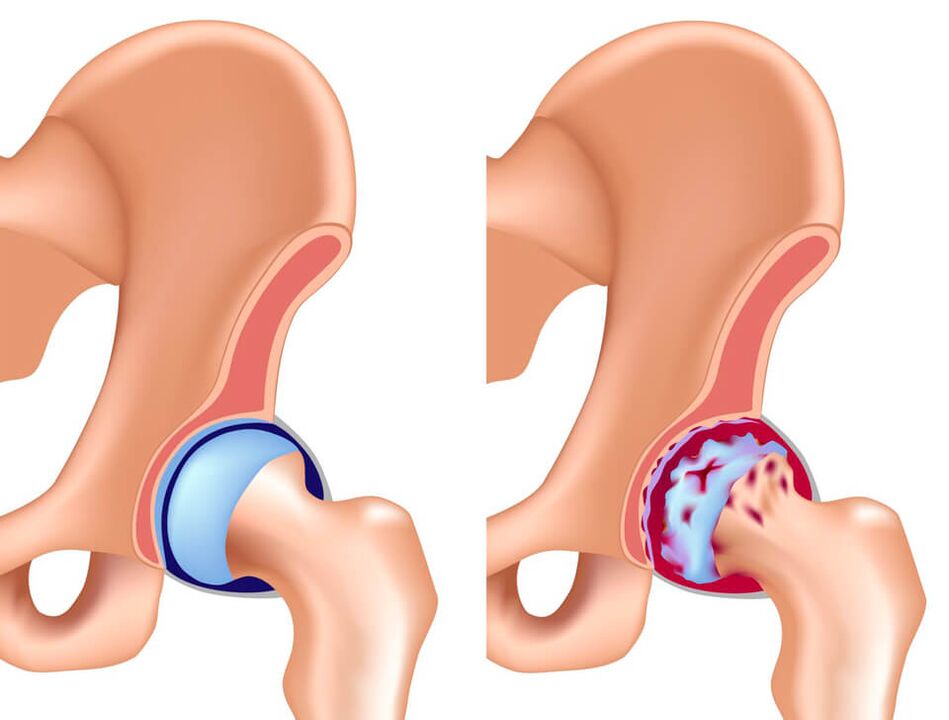
In most cases, pain in the pelvis is caused by the fact that the patient has one of the following problems:
- Arthritis
- Coxarthrosis
- Bursitis of the trochanteric bursa
- tendinitis
- Infectious pathologies
- Hereditary diseases
- Tumor formation in the pelvis
Without timely treatment, each of these causes can lead to severe complications, including loss of joint mobility.
Arthritis
Arthritis (coxitis) is a disease of the joint tissue, which is caused by a violation of the immune system or damage by pathogens: viruses and bacteria.
Symptoms of arthritis:
- rise in temperature
- Pain and swelling in the joint area
- Automobile depreciation
The disease develops in acute, subacute and chronic forms.
Coxarthrosis
Another name for coxarthrosis is osteoarthritis of the hip joint. This pathology is caused by metabolic disorders of cartilaginous tissues, which leads to their death. The cause of this phenomenon can be injury, blood supply disorders, excessive physical activity, age over 45 years and heredity. The main symptom of coxarthrosis is pain in the waist, groin and buttocks, which gradually increases during physical activity and causes lameness. Discomfort decreases during periods of inactivity.
Bursitis of the trochanteric bursa
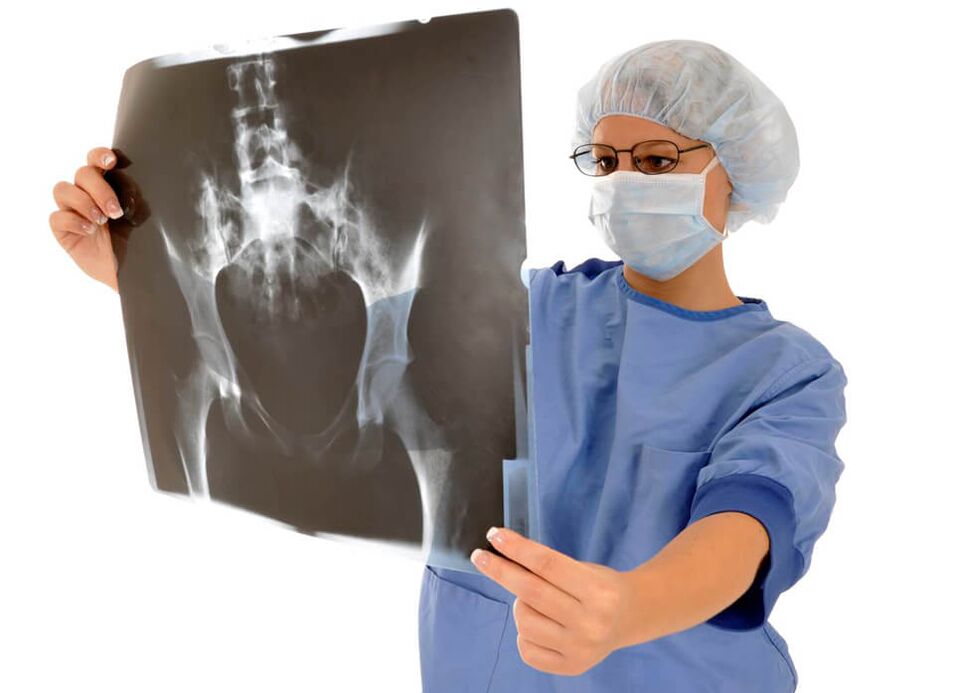
The presence of an inflammatory process in the bursa (trochanteric bursa) is characterized by intense pain in the joint area. Athletes and the elderly are susceptible to the disease. The main symptom of trochanteric bursitis is pain in the area of the greater trochanter, which increases when you try to lean on the affected leg.
tendinitis
Inflammation of tendons is called tendinitis. It is a disease that develops in an acute or chronic form and causes degenerative changes in tissues. Pathology often appears in athletes who do not follow the running technique, as well as after a heavy load on the thigh muscles.
As a rule, tendinitis is a complication of another disease:
- Pathology of the thyroid gland
- Metabolic disorders
- Arthritis
- arthrosis
- Inflammatory process of systemic or infectious origin
- Hip dysplasia
Tendonitis causes the patient discomfort during movement, pain, changes in gait and clicking in the joint area when walking.
infections
Some infectious diseases cause inflammation of joint tissues as well as nearby anatomical structures, resulting in severe pain in the hip joint. Most often, the following pathologies have similar symptoms:
- Aseptic necrosis of the femoral head is a violation of the blood supply to the groin, which leads to tissue death. The pain associated with this disease is acute and intense. The problem is more common in men.
- Purulent arthritis is a serious disease that requires urgent treatment. If you do not seek medical attention immediately, sepsis can develop. Associated symptoms are general intoxication, pain and swelling in the area of the affected joint, difficulty in motor activity.
- Tuberculous arthritis is common in children and is characterized by slow progression. Associated symptoms include increased fatigue, decreased motor activity, and muscle atrophy. Pain of varying intensity intensifies during the formation of a purulent abscess.
Infectious pathologies of the hip joint cause serious complications and therefore require urgent treatment.
Hereditary diseases
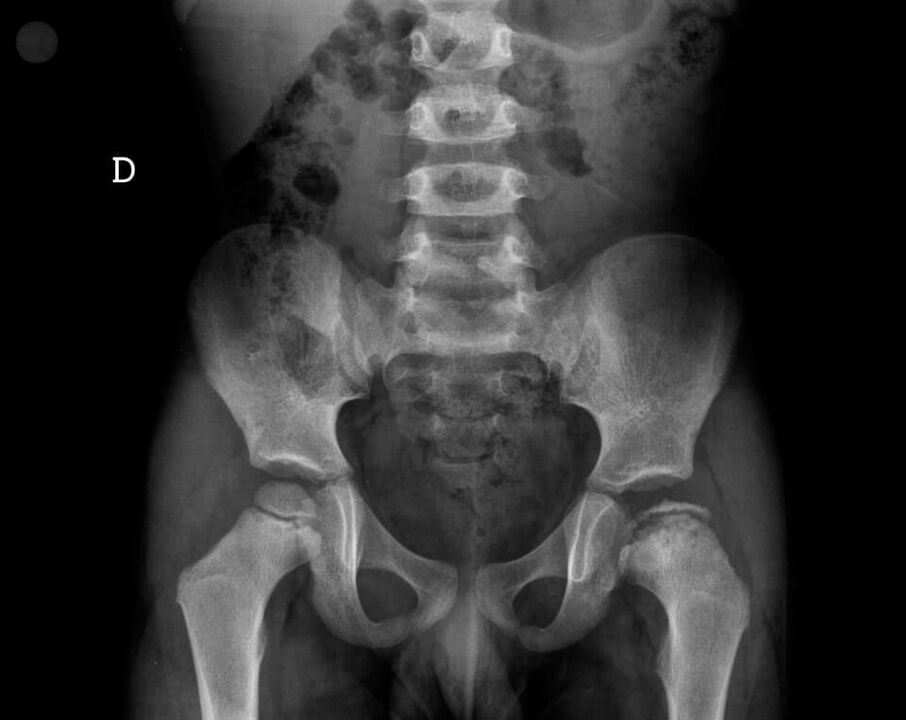
Hereditary disorders of the hip joint usually appear between the ages of 1 and 10 years and are characterized by pathological changes in the tissue of the glenoid cavity and/or the femoral head. The most common inherited disease affecting the hip joint is Legg-Calve-Pertes syndrome, which is characterized by pain and impaired walking due to the death of cartilage tissue in the joint.
Bone and soft tissue tumors
Benign or malignant growths of bone and soft tissue in the hip joint can cause pain when walking or at rest. Tumor can occur in bone tissues (osteomyelitis), cartilage tissues (chondroblastoma, chondroma), osteochondral tissues (osteochondroma). As a rule, neoplasms cause discomfort and are felt by palpation. Benign tumors are treated surgically; Some of them can turn into cancerous tumors.
Soft tissue tumors of the thigh:
- Lipoma
- Rhabdomyoma
- Fibroma
- Hemangioma
- Neuroma
An oncologist is involved in the diagnosis and treatment of tumors of the hip and pelvis.
What should I do
With severe pathologies of the hip joint, a person feels severe pain. Discomfort in the pelvis is the reason for a visit to a medical institution for examination and treatment.
Special attention should be paid to the intensity of pain:
- lungs- Bruises occur after an injury. Cold should be applied to the painful area to reduce swelling. It is recommended to take a non-steroidal anti-inflammatory drug to reduce pain. It is recommended to consult a doctor.
- Moderate- It is usually found in diseases of the hip joint, which is accompanied by difficulty in motor activity and an increase in body temperature. Discomfort increases during physical activity. It is necessary to consult a rheumatologist.
- strong- Occurs due to dislocations and fractures. accompanied by limitation or impossibility of physical activity. In case of severe pain in the hip joint caused by an injury, you should seek emergency help.
There are many folk recipes that are used for hip joint pain. It is important to remember that all of them are suitable for symptomatic treatment and pain reduction, but will not help the cause of the problem. Effective treatment is carried out exclusively under the supervision of a qualified doctor.
Which doctor should I contact?
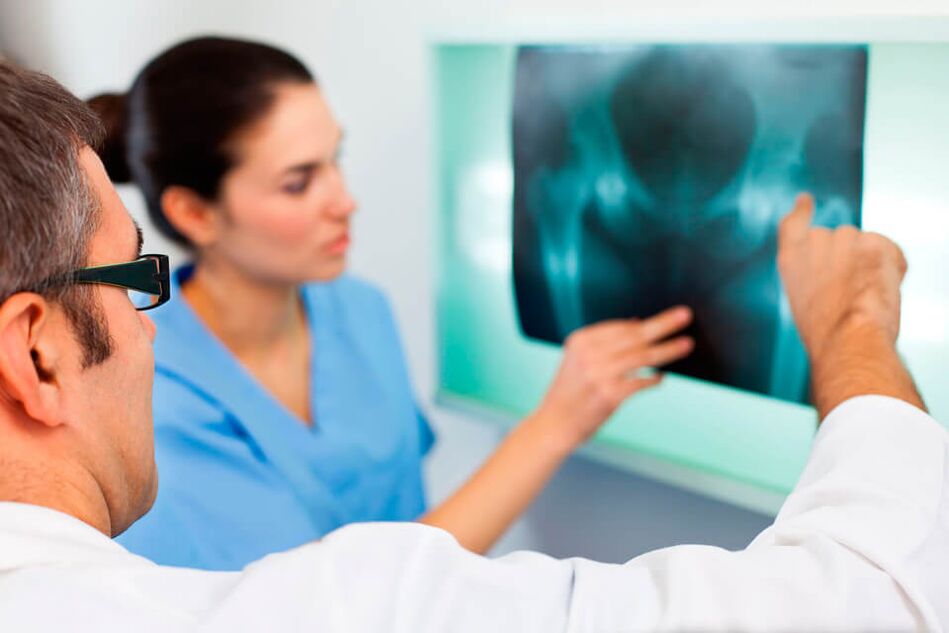
If you have hip pain, you should see your family doctor or general practitioner, who will refer you to a specialist. Diseases of the musculoskeletal system are treated:
- Traumatologist- Pain in the hip joint due to physical activity, sprains, falls and other injuries
- rheumatologist- Sudden onset of joint pain for no apparent reason
You may also need to consult other doctors: surgeon, oncologist, infectious disease specialist, etc. Sh.
diagnosis
The first important step in the diagnosis of hip joint pain is an external examination, which necessarily includes taking an anamnesis and palpation. Depending on the severity of the disease and the patient's complaints, laboratory tests and instrumental diagnostic methods are prescribed:
- Radiography- Using an X-ray to examine a specific area of the body
- CT and MRI- Modern accurate diagnostic methods that allow you to get highly informative images of the joint and its surroundings
- Microbiological examination of a sample of biological materialallows to reveal the presence of pathogenic microorganisms: viruses and bacteria
- Immunological blood test- allows you to identify immune disorders, determine the presence of certain autoantibodies
- Arthroscopy (endoscopic examination)- examination using a probe, the possibility of taking a sample of joint tissue for further research
- Laboratory examination of effusion- taking a sample of the intra-articular fluid during the puncture and identifying the cause of the infectious disease in it, checking its sterility.
The use of several diagnostic methods in combination allows us to identify the cause of hip joint pain with high accuracy.
treatment

Treatment of hip joint pain should be prescribed by a doctor based on examination and diagnosis. As a rule, drug therapy or surgery is prescribed.
Medicine
Treatment of hip joint pain should be comprehensive, aimed at eliminating the symptoms and most importantly at eliminating the cause of the problem. For this purpose, drug therapy is used, which includes:
- Nonsteroidal anti-inflammatory drugs- helps reduce pain, swelling
- means improvement of microcirculation- Helps restore blood circulation and nourish joint tissues
- Chondroprotectors- contributes to the restoration of cartilage tissue
- Muscle relaxants- Reduces pain, improves blood flow in the injured area
- Hormonal drugs- to relieve pain and suppress inflammation
Physiological procedures are very effective in the treatment of hip joint pain: massage, acupuncture, cryo- and laser therapy. Special therapeutic exercises and manual therapy are also used.
surgical
Surgical intervention is indicated in advanced cases when conservative treatment does not help the patient. This involves partial or complete replacement of the diseased joint with a prosthesis.
Prevention
Reducing the load on the legs will slow down the pathological processes inside the joint, so obese people are advised to start losing weight.
Preventive measures will help reduce pain in the hip joint:
- regular walking
- Physiotherapy
- Balanced diet, rich in vitamins A, C, E
Timely consultation with a doctor at the first stage of the disease increases the effectiveness of treatment and also reduces the risk of complications and serious consequences for the body.

















































